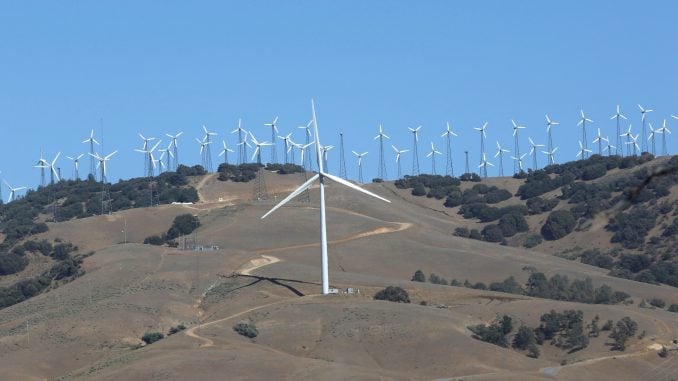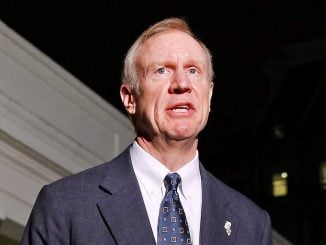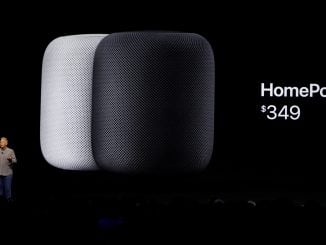
LOS ANGELES — Major U.S. corporations such as Wal-Mart Stores Inc and General Motors Co have become some of America’s biggest buyers of renewable energy, driving growth in an industry seen as key to helping the United States cut carbon emissions.
Last year nearly 40 percent of U.S. wind contracts were signed by corporate power users, along with university and military customers. That’s up from just 5 percent in 2013, according to the American Wind Energy Association trade group.
These users also accounted for an unprecedented 10% of the market for large-scale solar projects in 2016, figures from research firm GTM Research show. Just two years earlier there were none.
The big reason: lower energy bills. Costs for solar and wind are plunging thanks to technological advances and increased global production of panels and turbines. Coupled with tax breaks and other incentives, big energy users such as GM are finding renewables to be competitive with, and often cheaper than, conventional sources of electricity.
The automaker has struck deals with two Texas wind farms that will soon provide enough energy to power over a dozen GM facilities, including the U.S. sport utility vehicle assembly plant in Arlington, Texas that produces the Chevrolet Tahoe, Cadillac Escalade and GMC Yukon.
The company is already saving $5 million a year worldwide, according to Rob Threlkeld, GM’s global manager of renewable energy, and has committed to obtaining 100% of its power from clean sources by 2050.”It’s been primarily all driven off economics,” Threlkeld said. “Wind and solar costs are coming down so fast that it made it feasible.”
President Donald Trump’s administration has made no moves to target federal tax incentives for renewable energy projects, thanks mainly to bipartisan support in Congress. Many Republican lawmakers hail from states that are major solar or wind energy producers, among them Texas, Oklahoma and Iowa.
U.S. companies, meanwhile, are pursuing their own clean-energy agendas independent of Washington politics. Over the past four years, corporations have contracted for about 7 gigawatts of renewable energy enough to power more than 1 million homes. That number is expected to rise to 60 GW by 2025, according to the Edison Foundation Institute for Electric Innovation, a utility-backed non-profit based in Washington D.C.
Growth in renewables for years was driven by utilities laboring to meet tough state mandates to reduce carbon emissions, particularly in places such as California. Early corporate adopters included Alphabet Inc and Amazon.com Inc, leading-edge companies with progressive company cultures, deep pockets and major power needs. Now mainstream industries are stepping in as costs have plummeted. Wind-power costs have dropped 66% since 2009, according to the American Wind Energy Association, while the cost to install solar has declined 70% since 2010, according to the Solar Energy Industries Association trade group.
This year alone, home improvement retailer Home Depot Inc , wireless provider T-Mobile US Inc, banker Goldman Sachs and food producer General Mills announced major purchases of renewable energy.
Such deals can take many forms, but most are so-called power purchase agreements. Known as PPAs, these are roughly 10-to-20-year contracts in which the owner of a large solar or wind project sells electricity to large customers, often at rates lower than those charged by utilities. These agreements allow energy users to buy renewables at attractive prices with no upfront investment.
These agreements also help companies avoid outages if the sun doesn’t shine or the wind doesn’t blow. The massive wind farms and solar plants that support these contracts often supply electricity straight to the grid rather than feed it directly to corporate customers’ plants and offices. Companies get the benefit of clean energy without cutting themselves off from the security of the grid.
Furniture retailer IKEA is a notable exception to the PPA trend, preferring to own the renewable-energy assets that serve its U.S. business, including rooftop solar systems on most of its buildings and two wind farms in Texas and Illinois. The approach is part of the Swedish company’s long-term corporate strategy of owning all of its stores, factories and the land on which they’re built.
Demand from big corporations has benefited a host of wind and solar developers including Pattern Energy, First Solar and NextEra Energy. BNB Renewable Energy Holdings LLC, a privately held New York-based developer, said corporations now make up about half its business.
“There is a convergence right now where price is low and their sustainability commitments are high,” said Jos Nicholas, a managing partner with BNB.



